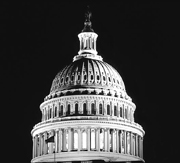By Mike Waring
Executive Director of Federal Relations

On Feb. 27, President Bush sent to Congress his proposed budget for fiscal year 2002. As with all such documents, the president’s budget is merely the starting point for a yearlong series of negotiations, as Republicans and Democrats seek to find common ground on where and how much of Americans’ tax dollars ought to be spent.
The initial budget released by the White House had few specifics. This is typical early in the budget process, when the president wants to lay out general themes. In April, a more detailed budget will be released that will have specific line-item amounts for each program for which Congress appropriates funding.
So, what does the budget mean? What conclusions can we divine from it?
Keep in mind that this budget is just the beginning of a lengthy process that ultimately will determine the final budget numbers. From here, House and Senate budget committees will hold hearings and then create budget resolutions to guide lawmakers in preparing the appropriations bills that will be considered later in the year. Those budget resolutions will lay out specific allocations for various functions of the government. In the U-M’s case, the focus will be on science funding, student aid, educational initiatives and tax provisions, among others. Usually, the minority party offers its version of a budget, which is routinely debated but then defeated.
Despite a statutory deadline of Sept. 30 to pass all 13 appropriations measures, Congress rarely makes that target. Finally, in October or November, Congress will finish up its work and head home, only to start this process all over again next January.
As the proposals that Bush has made are reviewed, it is important to remember that this is merely the opening deal of a long, high-stakes poker game that will have many votes along the way and many opportunities for Congress to modify or negotiate with the White House the final budget numbers for 2002.
It is clear, however, from reading the president’s initial document that he has placed an emphasis on K–12 education. As for higher education, increases in Pell grants are mentioned, as are more funds to educate more teachers, particularly in math and science. The specifics on each will become clearer when the April budget is provided. There also are several tax changes that would help universities.
On the research side, the National Institutes of Health receives a large increase, but other agencies such as the National Science Foundation would see smaller gains. Some programs —such as the Advanced Technology Program at the Department of Commerce—could see major cutbacks. Thus, there are both pluses and minuses with this budget, as with any first draft.
The goal is to make the case for funding for important programs, urging lawmakers to provide higher education with the tools and resources it needs to carry out its mission of quality education and research. Working with other universities and allied organizations, the U-M will be doing just that throughout 2001.
For more information, contact Mike Waring or Cindy Bank in the Washington, D.C., office, (202) 554-0578, [email protected] or [email protected].

